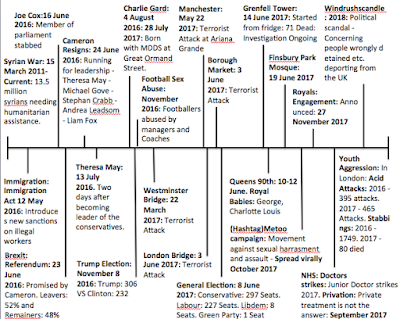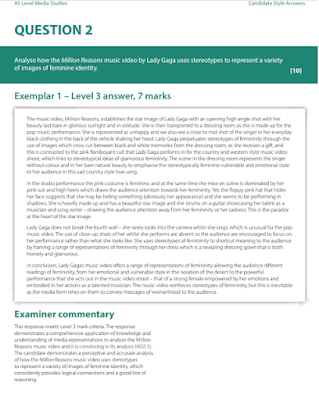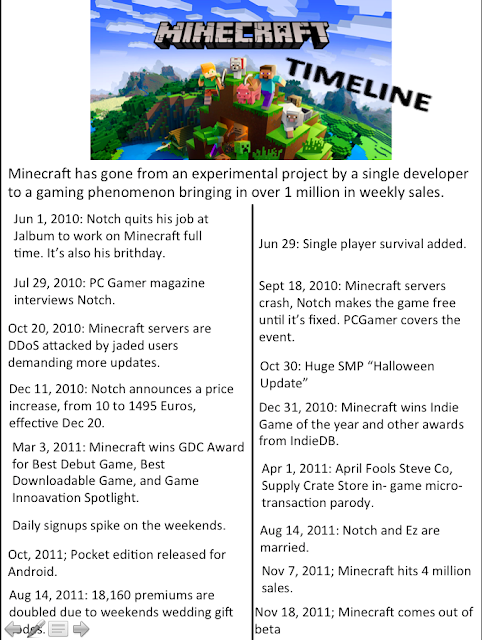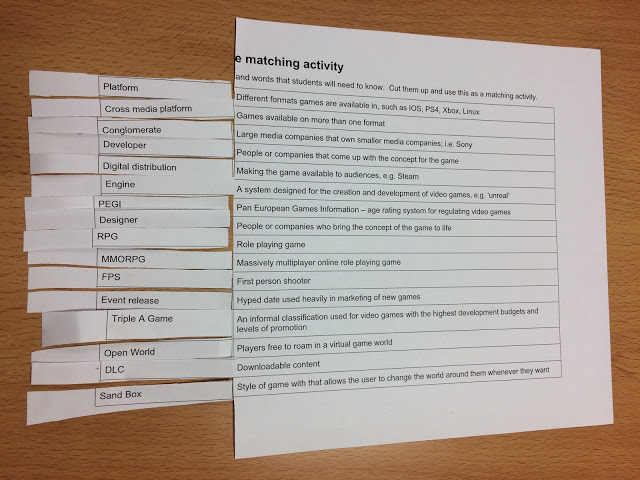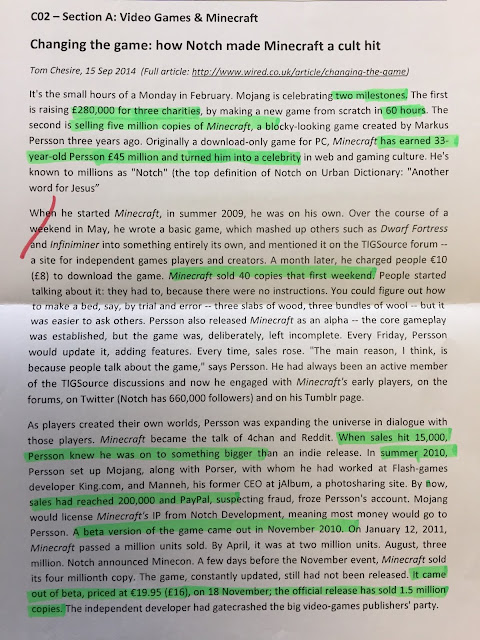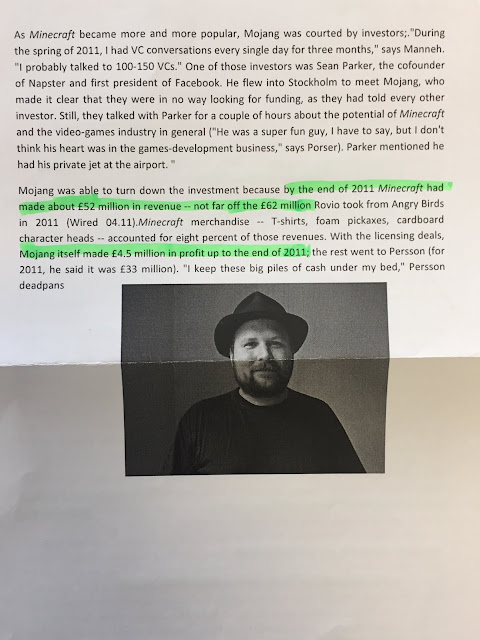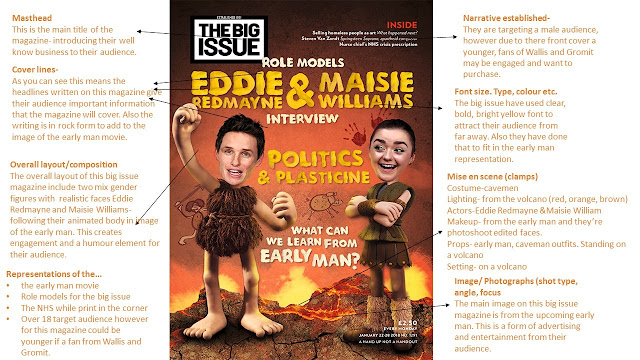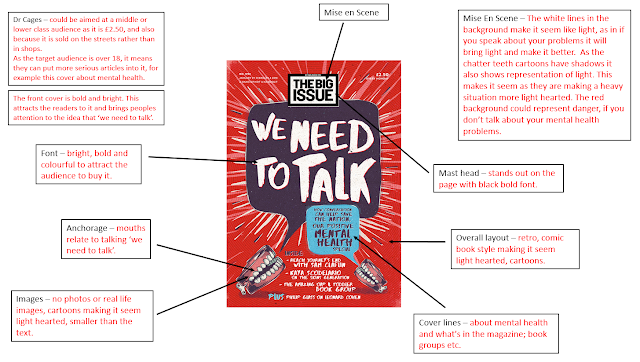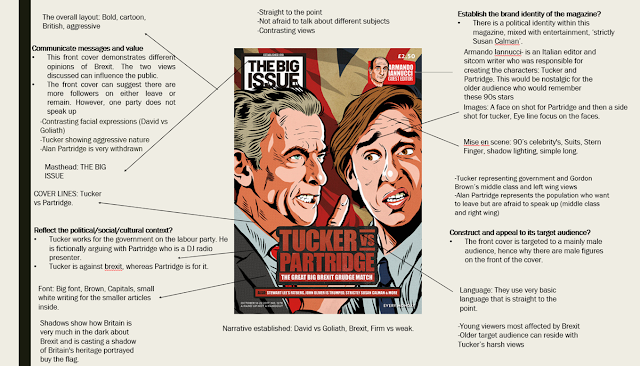INTRO TO CONTEXT – IN THE EXAM YOU MAY BE ASKED TO REFER TO
ECONOMIC, POLITICAL, SOCIAL OR CULTURAL CONTEXT. THESE OF COURSE TEND TO
OVERLAP. HERE IS A TASTER FOR YOU TO RESEARCH AND SUMMARISE. WE THOUGHT
ECONOMIC WOULD BE A BIT TOO BORING FOR THE SUMMER HOLIDAYS BUT WE’LL RETURN TO IT.
BIG NEWS, CURRENT
EVENTS, POLITICS, ROYALS, TERRORISM AND HATRED, SYRIAN WAR AND SPECIFIC UK ISSUES.
·
CULTURAL TRENDS
OF 2016-2018
The zeitgeist: The Zeitgeist is a concept from 18th to 19th-century German philosophy, translated as "spirit of the age" or "spirit of the times". It refers to an invisible agent or force dominating the characteristics of a given epoch in world history.
The zeitgeist: The Zeitgeist is a concept from 18th to 19th-century German philosophy, translated as "spirit of the age" or "spirit of the times". It refers to an invisible agent or force dominating the characteristics of a given epoch in world history.
· Films: There has been many movies with diverse casts. For example, LaLa land, which is a singing film. There was also a number of the released like The Jungle Book and Moana. Social media really helps promote the films and how different they all can be. Some of the top films this year were Dunkirk, IT, Black Panther and Mamma Mia 2 - Here We go again.
Again, media has influenced these programmes through covering what people want.
The media influenced all these films as they were either based on real life events, a sequel or popular demand.
TV Programs: Some of the top tv programmes are Orange is the new black, Stranger Things, Sherlock, Love Island and The Crown. They cover a range of genres, from crime to reality tv. Again, media has influenced these programmes through covering what people want.
· Music:
In 2016, the top songs were; Closer- Chainsmokers, One Dance- Drake, This is what you came for- Calvin Harris ft Rihanna, Cant stop the feeling- Justin Timberlake and Work from home- Fith Harmony.
In 2017, the top songs were; Despacito- Luis Fonsi, Shape of you- Ed Sheeran, I'm the one- DJ Khaled, Something just like this- Coldplay, Unforgettable- French Montanna.
In 2018, the top songs were; The middle- Maren Morris, God's plan- Drake, No Tears left to cry- Ariana Grande, I like it- Cardi B and Nice for what- Drake.
In 2016, the top songs were; Closer- Chainsmokers, One Dance- Drake, This is what you came for- Calvin Harris ft Rihanna, Cant stop the feeling- Justin Timberlake and Work from home- Fith Harmony.
In 2017, the top songs were; Despacito- Luis Fonsi, Shape of you- Ed Sheeran, I'm the one- DJ Khaled, Something just like this- Coldplay, Unforgettable- French Montanna.
In 2018, the top songs were; The middle- Maren Morris, God's plan- Drake, No Tears left to cry- Ariana Grande, I like it- Cardi B and Nice for what- Drake.
·
Video games:
In 2016, the top games were; Fifa 17, Call of duty, Battlefield, The division and Grand theft Auto IV.
In 2017, the top games were; gravity rush 2, Resident evil 7, for honour, halo wars 2 and horizon zero dawn.
In 2018, the top games were; Dragon ball fighter, monster hunter, shadow of the colossus, bayonetta and pac man championship edition 2.
In 2016, the top games were; Fifa 17, Call of duty, Battlefield, The division and Grand theft Auto IV.
In 2017, the top games were; gravity rush 2, Resident evil 7, for honour, halo wars 2 and horizon zero dawn.
In 2018, the top games were; Dragon ball fighter, monster hunter, shadow of the colossus, bayonetta and pac man championship edition 2.
·
Youtube, memes, twitter storms: It started out in 2016 with 'damn daniel' and drakes album 'views', then in 2017 was mocking spongebob and Distracted boyfriend. In 2018 some of the trends are the Yodel boy and the use of the word 'girls'.
:
SOCIAL CONTEXT
·
DISABILITY- The Paralympians in the media were represented as 'superhumans'. There were many front covers of newspapers highlighting the medals won in the paralympics. There are more and more programs on TV focussing on disability on the BBC there are 2 pages full of disability based programs. This is great for creating awarness and for charities.
·
REGIONALISM- Towie stars used to be seen as stupid, vein and fake. However, especially on social media, tommy mallet, pete wicks and chloe sims have made successful businesses which all have been publicised positively and cuts down the stereotype of a typical 'stupid' essex person. Made in chelsea stars typically are portrayed in the media as rich, posh and stuck up. However, when made in chelsea star Georgia ‘toff’ Toffolo entered the i'm a celebrity jungle, she became the nation’s sweetheart. Many stars then go on to being on other shows or becoming social influencers.
REGIONALISM- Towie stars used to be seen as stupid, vein and fake. However, especially on social media, tommy mallet, pete wicks and chloe sims have made successful businesses which all have been publicised positively and cuts down the stereotype of a typical 'stupid' essex person. Made in chelsea stars typically are portrayed in the media as rich, posh and stuck up. However, when made in chelsea star Georgia ‘toff’ Toffolo entered the i'm a celebrity jungle, she became the nation’s sweetheart. Many stars then go on to being on other shows or becoming social influencers.
CLASS – The stereotype of 'Chavs' do still exist and are known for being rude, of low social class and not very clever. They are stereotyped as wearing tracksuits, carrying knives and doing drugs. They are represented in a negative way, and recently, have had a lot of criticism due to the increase of knife crime in London.
-ABC1 is typically upper class / middle class people.
-Beyonce and Jay-Z's recent album 'The Carters' has been publicised both positively and negatively in the media. The positive of it was that they are a family unit and the negative is that they are presenting themselves as being severely upper class, making it hard for normal people to relate.
·
AGE – Elderly people are represented in the news as vulnerable and poor. There have been lots of recent stories about abuse in care homes for the elderly. This makes it seem as though all elderly people are vulnerable and incapable.
AGE – Elderly people are represented in the news as vulnerable and poor. There have been lots of recent stories about abuse in care homes for the elderly. This makes it seem as though all elderly people are vulnerable and incapable.
·
GENDER - #metoo is a movement against sexual harassment and assault. It spread virally in October 2017 as a hashtag used on social media in an attempt to demonstrate the widespread prevalence of sexual assault and harassment, especially in the workplace.
GENDER - #metoo is a movement against sexual harassment and assault. It spread virally in October 2017 as a hashtag used on social media in an attempt to demonstrate the widespread prevalence of sexual assault and harassment, especially in the workplace.
·
ETHNICITY – The song 'This is America', the media went crazy about the music video and its hidden messages. Childish Gambino plays America himself, using violence and the use of entertainment as a distraction. As he says 'this is america' he shoots a black man, this represents the use of gun crime in America. The video highlights black lives, and their history in the US
ETHNICITY – The song 'This is America', the media went crazy about the music video and its hidden messages. Childish Gambino plays America himself, using violence and the use of entertainment as a distraction. As he says 'this is america' he shoots a black man, this represents the use of gun crime in America. The video highlights black lives, and their history in the US
·
SEXUALITY –
SEXUALITY –
-NETFLIX: Sophia Burset (Laverne Cox) in Orange Is the New Black is transgender woman. The show is increasingly popular, and her story line grabbed the media as she took the change from male to female, and her journey was very heart felt and emotional.
-TV DRAMA: Sonia Fowler - Eastenders - became a lesbian, after being straight and having a child. The show, took this as a chance to publicise how this does happen, and how people who do this are normal, also showing you are allowed to be true to yourself.
-TV DRAMA: Rana - Coronation Street. Her change from heterosexual to lesbian took the nation by surprise as she is a Muslim. In the show, her parents disowned her but others accepted it and the media took this as an opportunity to show that this can happen and although Muslim guidelines are strict about adultery and sexual relationships, she should be allowed to be her own person.
